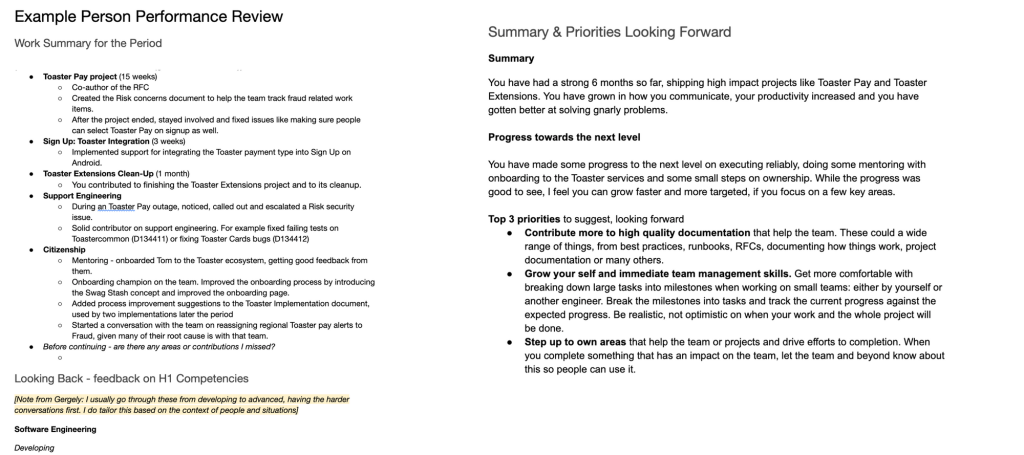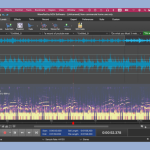Unlock The Power Of Software Peer Review: Learn From This Eye-Catching Example And Take Action Now!
Software Peer Review Example: Ensuring Quality and Collaboration
Introduction
Dear Readers,
2 Picture Gallery: Unlock The Power Of Software Peer Review: Learn From This Eye-Catching Example And Take Action Now!


Welcome to this informative article on software peer review examples. In today’s fast-paced and competitive digital world, it is essential for software development teams to ensure the quality and reliability of their products. This is where software peer review comes in. By involving multiple team members in the review process, potential errors and bugs can be identified and rectified before the software is released. In this article, we will explore the importance, benefits, and best practices of software peer review examples. So let’s dive in!
What is Software Peer Review?

Image Source: pragmaticengineer.com
🔍 Software peer review involves a systematic assessment of software code by a team of developers. It aims to identify defects, improve quality, and ensure code meets the required standards. Through a collaborative approach, team members can provide feedback, share knowledge, and validate the functionality of the software. This review process plays a crucial role in maintaining the integrity and efficiency of software development projects.
Who Participates in Software Peer Review?
🔍 The participants in software peer review typically include fellow developers, project managers, quality assurance professionals, and stakeholders. Each member brings their unique perspective and expertise to evaluate the software code and identify potential flaws. By involving a diverse group of individuals, software peer review fosters collaboration and enables a comprehensive assessment of the codebase.
When Should Software Peer Review Take Place?
🔍 Software peer review should ideally be conducted at different stages of the software development life cycle. It can begin as early as the design phase and continue throughout coding, testing, and deployment. By conducting reviews at multiple checkpoints, developers can catch and address issues early on, minimizing potential risks and reducing the cost of fixing defects in later stages.
Where Does Software Peer Review Happen?

Image Source: rgstatic.net
🔍 Software peer review can take place both physically, with team members gathering in a meeting room, or virtually, using collaboration tools and code review software. With the increasing popularity of remote work and distributed teams, virtual peer review platforms have gained prominence. These platforms provide a centralized space for team members to discuss and evaluate the code, regardless of their physical location.
Why is Software Peer Review Essential?
🔍 Software peer review offers several benefits that contribute to the overall success of software development projects. Firstly, it helps in identifying and fixing defects early on, reducing the likelihood of critical issues in the final product. Additionally, peer review promotes knowledge sharing among team members, fostering a culture of learning and continuous improvement. It also enhances team collaboration, as individuals gain insights into different programming techniques and approaches.
How to Conduct Software Peer Review Effectively?
🔍 To conduct software peer review effectively, it is important to establish clear guidelines and expectations. Here are some best practices:
Define specific objectives and goals for the review process.
Set a realistic timeline and allocate sufficient resources.
Ensure reviewers understand the software requirements and design.
Use code review tools to facilitate the review process.
Encourage constructive feedback and open communication.
Document and track identified issues for future reference.
Follow up on the review recommendations and implement necessary changes.
Advantages and Disadvantages of Software Peer Review
Advantages:
👍 Improved code quality and reduced defects.
👍 Enhanced collaboration and knowledge sharing.
👍 Early detection of potential issues.
👍 Increased software reliability and customer satisfaction.
👍 Opportunities for skill development and learning.
Disadvantages:
👎 Time-consuming process.
👎 Possibility of subjective evaluations.
👎 Potential resistance from team members.
👎 Risk of overlooking certain types of defects.
👎 Increased workload for developers.
Frequently Asked Questions (FAQs) about Software Peer Review
Q1: What is the role of the author in a software peer review?
A1: The author’s role is to present their code to the reviewers, explain the design decisions, and respond to any queries or feedback provided during the review process.
Q2: How long does a typical software peer review take?
A2: The duration of a software peer review can vary depending on factors such as the complexity of the code, the number of reviewers involved, and the scope of the review. It can range from a few hours to several days.
Q3: Can software peer review be automated?
A3: Yes, certain aspects of software peer review can be automated using code review tools. These tools can assist in identifying common coding errors, enforcing coding standards, and providing metrics on code quality.
Q4: How should feedback be provided during a software peer review?
A4: Feedback should be specific, constructive, and focused on improving the quality of the code. It is important to provide clear explanations and suggestions for resolving identified issues.
Q5: Can software peer review be performed in agile development environments?
A5: Yes, software peer review can be seamlessly integrated into agile development methodologies. It can be incorporated as part of the sprint process, allowing teams to continuously review and improve the codebase.
Conclusion
In conclusion, software peer review examples are indispensable for ensuring the quality, reliability, and efficiency of software development projects. By leveraging the collective expertise of team members, it enables the identification and rectification of potential defects before the software is released. Through effective peer review practices, developers can enhance collaboration, improve code quality, and foster a culture of continuous improvement. Embracing software peer review as a standard practice will undoubtedly lead to better software products and satisfied end-users. So, don’t hesitate – implement software peer review in your development process and reap the rewards!
Best regards,
Your friends at Software Development Insights
Final Remarks
📢 The information presented in this article serves as a general guide to software peer review examples. It is important to adapt these principles and practices according to your specific project requirements and organizational context. While software peer review can significantly enhance the quality of software products, it should be considered as part of a comprehensive quality assurance strategy. Remember, each software development project is unique, and the approach to peer review may vary accordingly. We encourage you to consult industry experts and experienced professionals to tailor the peer review process to your specific needs. Happy coding and reviewing!
This post topic: Software Reviews


